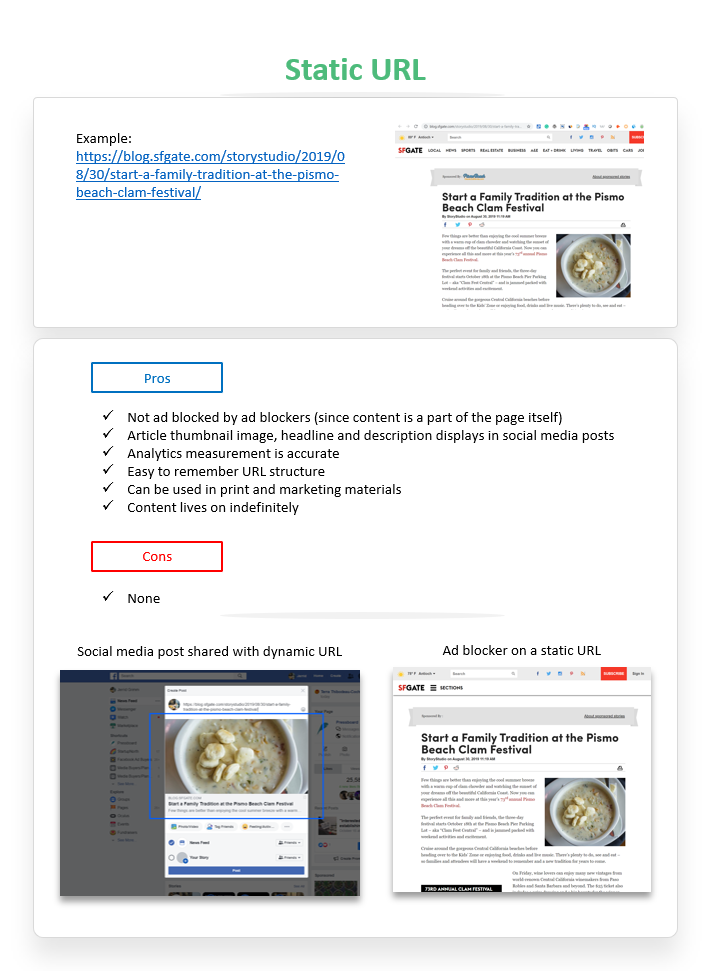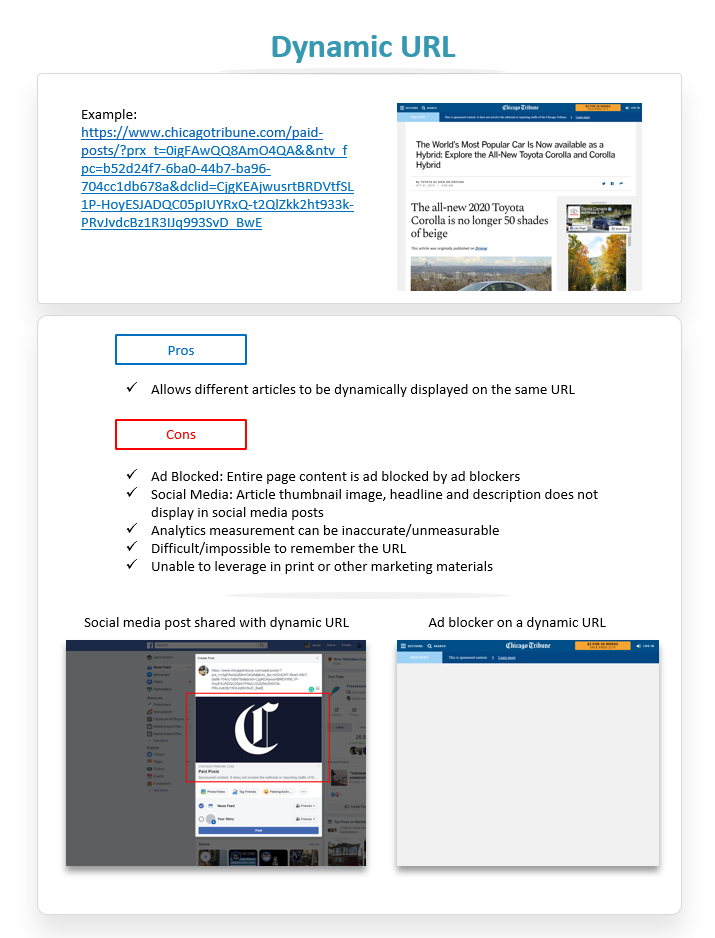Static URL vs Dynamic URL Pressboard requires a true static URL to properly measure sponsored content. Jerrid Grimm
What's the difference and why does it matter?
A URL (Uniform Resource Locator), also know as a web address, is how we find content on the internet. Articles, videos, even Facebook posts, all have a URL that magically point us to to the content we're after. The structure of most URL's is pretty straightforward, they are called static URL's. A domain name, followed by the URL path of the article or content page, like this: https://www.domainname.com/nameofthesection/nameofthearticle.
Here's an example of a static URL: start-a-family-tradition-at-the-pismo-beach-clam-festival/

Some pages however are structured differently, they are called dynamic URL's. In sponsored content, dynamic pages are sometimes used to display different articles on the same page through an ad serving platform, Nativo is one example of this. Dynamic URL's work by taking a blank page and serving ad units onto that page. One unit serves the headline, another the body copy, another the image etc. Dynamic pages use the domain name but then a series of elements after a separator, such as a question mark (?), like this: https://www.domainname.com/nameofthesection/?abcdefg12345-987zyx
Here's an example of a dynamic URL: ?prx_t=0igFAwQQ8AmO4QA&&ntv_fpc=b52d24f7-6ba0-44b7-ba96-704cc1db678a&dclid=CjgKEAjwusrtBRDVtfSL1P-HoyESJADQC05pIUYRxQ-t2QlZkk2ht933k-PRvJvdcBz1R3IJq993SvD_BwE

Challenges with dynamic URL's
Because dynamic URL's are ad-served there are several issues with using them for sponsored content. Here are a few:
- If a user has an ad blocker the entire page, including the headline, content and any images are all blocked as well. The page is blank.
- Social media sites, such as Facebook and LinkedIn use something called "meta tags" and "open graph tags" to create previews automatically in the social feed. Dynamic URL's do not have these, so the posts in social media end up showing the domain's logo and site name only.
- Measurement technologies such as Pressboard ignore the part of the domain after the separator so that all performance data from the article can be aggregated together in a unified report. The information after the ? is normally used for things like UTM campaign parameters and Referral information.
What should I do?
Ask your publishing team to publish the article onto a static URL and and request that any amplification drives to that same static URL so that all performance can be tracked.
Did this answer your question?